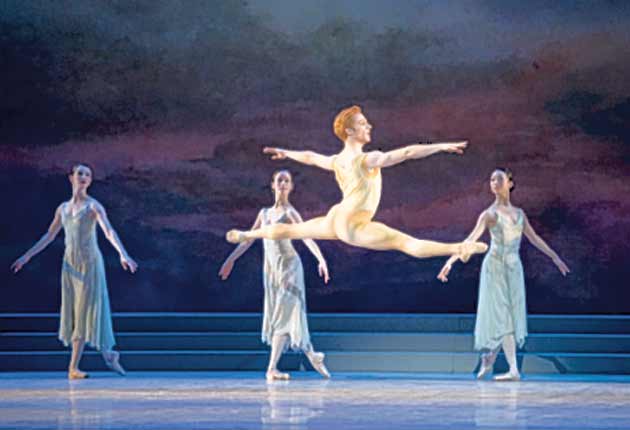Royal Ballet Triple Bill, Royal Opera House, London

Your support helps us to tell the story
From reproductive rights to climate change to Big Tech, The Independent is on the ground when the story is developing. Whether it's investigating the financials of Elon Musk's pro-Trump PAC or producing our latest documentary, 'The A Word', which shines a light on the American women fighting for reproductive rights, we know how important it is to parse out the facts from the messaging.
At such a critical moment in US history, we need reporters on the ground. Your donation allows us to keep sending journalists to speak to both sides of the story.
The Independent is trusted by Americans across the entire political spectrum. And unlike many other quality news outlets, we choose not to lock Americans out of our reporting and analysis with paywalls. We believe quality journalism should be available to everyone, paid for by those who can afford it.
Your support makes all the difference.How do you do that? Rhapsody, which opens this Royal Ballet triple bill, was created to show off Mikhail Baryshnikov's spectacular technique. Frederick Ashton's ballet is full of leaps and turns and impossible virtuosity, made to be danced with nonchalant ease. Steven McRae reaches unlikely levels of brilliance. His last sequence of turns is so quick, it's as if they've speeded up a film.
It's a performance with depth as well as dazzle. McRae's timing is wittily sharp, his arms and torso beautifully nuanced. He's matched by Alina Cojocaru, who zips through fleet footwork and melting upper body movement. The six female soloists float through their moments in the spotlight, while Jonathan Higgins plays the Rachmaninoff score with crisp precision.
Alastair Marriott's Sensorium from 2009 is attractive but inconsequential. Adam Wiltshire's set is dominated by a curved, slashed panel, suggesting a sail or a boat. The music is Debussy piano preludes in luscious orchestrations by Colin Matthews.
The dances are the least memorable thing about the ballet. In one duet, Leanne Benjamin leans on Thomas Whitehead as if he were a barré. Marianela Nuñez curls herself around Rupert Pennefather in another meandering duet. The corps de ballet bend and flex on point.
David Bintley's 1988 ballet Still Life at the Penguin Café is an animal dance with an environmental message. Simon Jeffes's music is a mix of palm court and world music. Bintley uses it to show endangered species dancing in a range of character styles, from 1930s ballroom to morris dance.
Hayden Griffen's animal masks and social dance costumes are clever, but the choreography is thin. There's too much repetition. When Bintley brings on the ballroom dancers, his steps lack variety. Zenaida Yanowsky is a stylish Utah longhorn ram, while McRae is charismatic even as a Brazilian woolly monkey.
In rep to 28 March (020 7304 4000)
Join our commenting forum
Join thought-provoking conversations, follow other Independent readers and see their replies
Comments